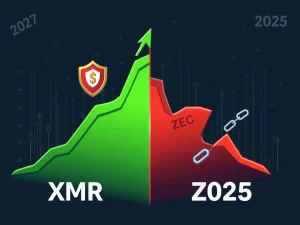Polygon Triumphs: Critical RPC Node Bug Fix Restores Flawless Consensus

The **Polygon Layer-2 network** recently demonstrated its resilience. It successfully resolved a critical **RPC node issue**, restoring full blockchain consensus. This swift action reassures users and developers within the vibrant **Ethereum ecosystem**. It underscores Polygon’s commitment to maintaining a robust and reliable infrastructure.
Understanding the Polygon RPC Node Issue
Polygon, a leading scaling solution for Ethereum, faced a recent technical challenge. An unexpected software bug impacted some of its remote procedure call (RPC) nodes. These nodes are vital. They relay information between decentralized applications and the blockchain. Consequently, some nodes fell out of sync with the main chain. Importantly, this incident did not halt on-chain block production. Transactions continued to process, ensuring network continuity. The issue primarily affected data synchronization and communication across certain parts of the network.
The core of the problem stemmed from a “faulty” proposal. A validator initiated this proposal, causing some Bor nodes to diverge. Bor nodes handle transaction ordering and block production. This divergence created separate network forks for the impacted nodes. This situation highlighted the complexities inherent in large-scale blockchain operations. However, Polygon’s team quickly mobilized to address the anomaly.
Swift Resolution: The Polygon Bug Fix Explained
The Polygon Foundation acted decisively. They executed a hard fork to implement necessary corrections. This comprehensive **Polygon bug fix** involved several key steps:
- **Heimdall v0.3.1 Release:** A new version of Heimdall was deployed. Heimdall is Polygon’s consensus client. This update included a hard fork. It specifically deleted the identified problematic milestone.
- **Bor 2.2.11 Beta2 Update:** The Bor client also received an update. This version purged the faulty milestone from its database.
- **Node Resynchronization:** These fixes enabled affected nodes to resynchronize. They now finalize checkpoints and milestones normally.
Sandeep Nailwal, Polygon co-founder, confirmed the successful implementation. He stated, “We rolled out fixes on both Heimdall v0.3.1… and Bor 2.2.11 beta2… With these fixes now live, nodes are not stuck, checkpoints and milestones are finalizing normally.” This transparent communication is crucial for maintaining trust in the **Ethereum ecosystem**.
Maintaining Blockchain Consensus and Finality
The primary goal was to restore complete **blockchain consensus** and finality. Consensus ensures all network participants agree on the state of the blockchain. Finality means transactions are irreversible once confirmed. The bug threatened this agreement among some nodes. However, block production itself remained uninterrupted. This distinction is vital. Users could still conduct transactions. The block explorer, Polyscan, displayed all transactions correctly. This indicated the underlying chain continued to operate robustly. The quick fix prevented any long-term disruption to the user experience.
The successful resolution reinforces Polygon’s commitment to network stability. It also showcases the team’s technical expertise. They quickly identified the root cause. Then, they deployed a targeted solution. This proactive approach helps secure the integrity of the Layer-2 network. It ensures that Polygon remains a reliable platform for decentralized applications and digital assets.
Previous Incidents and Ongoing Resilience of the Layer-2 Network
This was not Polygon’s first encounter with software challenges. The network experienced a similar incident in July. At that time, the Heimdall mainnet halted for about an hour. That partial outage resulted from a validator exiting the network. Like the recent **RPC node issue**, block production never ceased during the July event. New blocks continued to be added via the Bor mainnet. These incidents highlight the complexities of maintaining large-scale blockchain infrastructure. They also demonstrate Polygon’s consistent ability to recover quickly.
As cryptographic protocols grow more intricate, bugs may become more frequent. Blockchains now host smart contracts, file storage, and cross-chain interoperability. This complexity increases the potential for technical glitches. However, Polygon’s rapid response to these issues builds confidence. It shows their dedication to continuous improvement and network security. The team consistently works to enhance the stability and performance of the **Layer-2 network**. This commitment benefits all users and developers relying on Polygon for scalable and efficient transactions within the **Ethereum ecosystem**.










